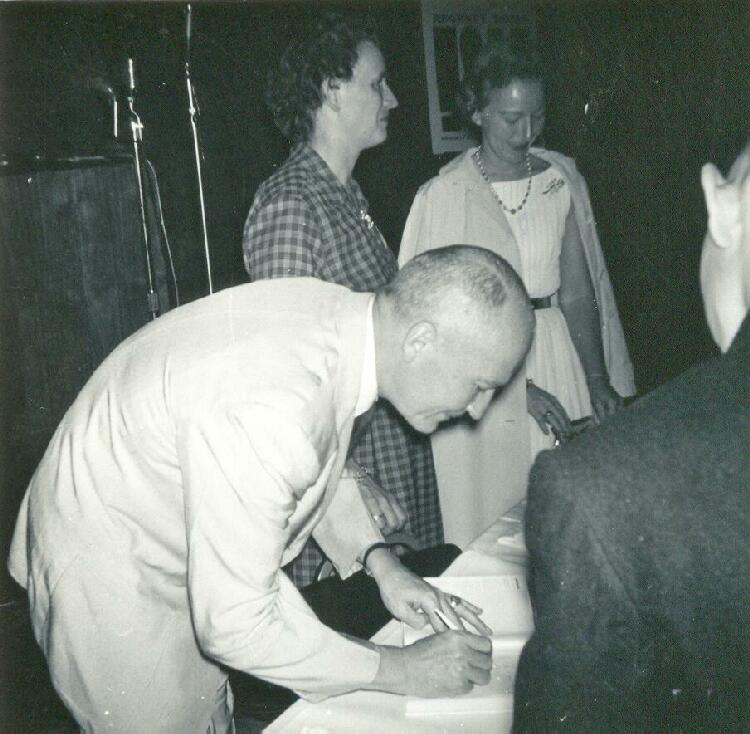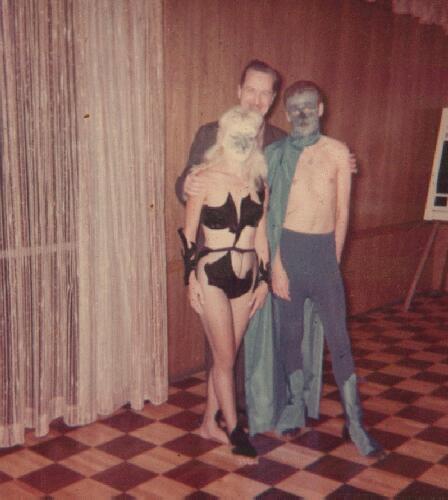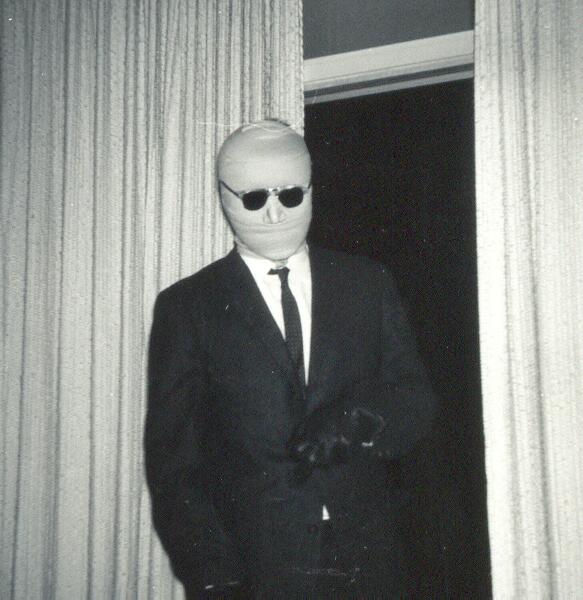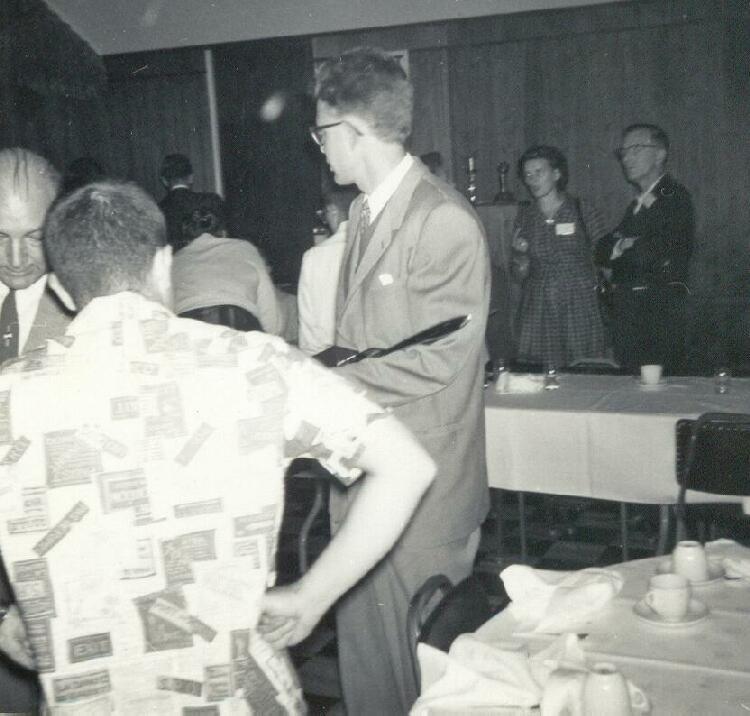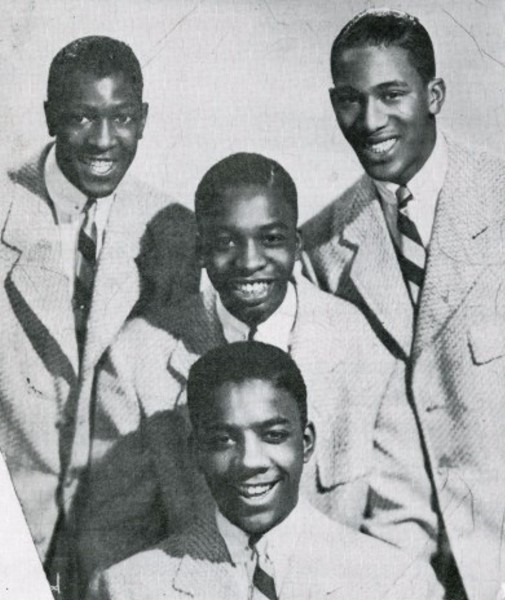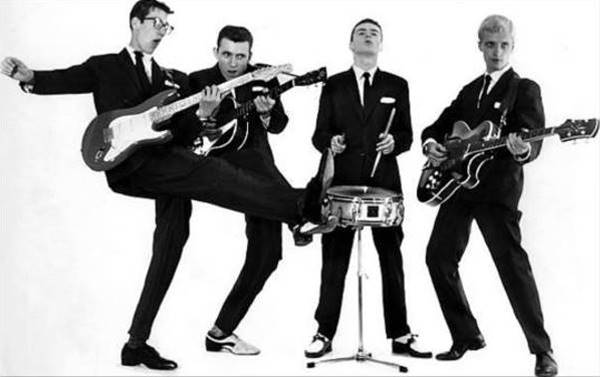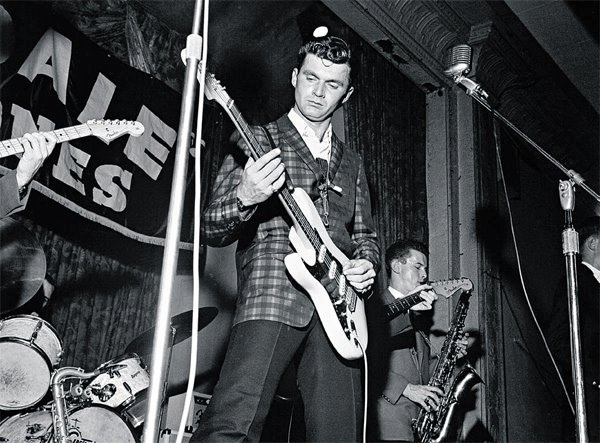
by Gideon Marcus
Just what is the Galactic Journey? Who is this mysterious "Traveler"?
Every so often, it's good idea to remind my readers who I am and why I do what I do. This weekend, I am presenting at a local science fiction gathering, so it makes sense that the first article they see makes sense of all of this.
My twin passions are science fiction and outer space. I live with my wife and daughter in San Diego, the fairest city in the Golden State of California. From 9 to 5, I run a mid-sized electronics company. In my off time, I maintain this column, writing about current books, magazines, movies, and science news (as well as other miscellany).
Oh yes. I live in 1961.

Normally, I wouldn't have cause to mention this fact. For the longest time, I was the under the impression that we all lived in the same time. Some of the mail I've been getting, however, suggests that a few of you come from the future — 55 years, to be exact.
It's quite exciting to have a fan-base from the far-flung time of 2016. They report on all sorts of far out advances, some of which have been conceived in science fiction, others of which are beyond our wildest dreams.
Happily, they report that global overpopulation has not been realized. On the other hand, global warming has. They say that Pluto is not a planet; well, that's nothing new.
I suspect, of course, that this is all a fannish game. No one really can know the future. The best we can do is write down our speculations and hope we're right (or in the case of scary visions, wrong!)

And that leads nicely into the subject of this article, the September 1961 issue of The Magazine of Fantasy and Science Fiction. For those of you who don't know, F&SF is one of several monthly science fiction digests, each containing a slew of stories. The story length ranges from single-page vignettes through serialized novels that run over several issues. Digests used to be the way science fiction was delivered to the public. They've been on the decline since their peak in 1953, however, and the science fiction novel appears to have taken its place.
There is still plenty of good stuff to be found in the magazines, however. Here's what I found in this issue:
Gérard Klein is an author for F&SF's French edition, and his The Monster in the Park was deemed good enough to be translated into English (thank you, Virginia Kidd!) It is a worthy piece, this tale of an alien's landing in a Parisian park. The pacing is excellent, with the largely expositional setup interpreted through the lens of a worried Frenchwoman's grief over the possibility that her husband has been abducted. The story builds the tension quite nicely, and the resolution works, though it is a bit abrupt. Four stars.
Moving on, we have Herbert Gold's satirical The Day They Got Boston, about the diplomatic tit-for-tat that might ensue should the Soviets ever accidentally blow up one of our cities. His name may be unfamiliar to you if you're the kind who never leaves our particular genre. In fact, Gold writes a lot, but most of his stuff ends up in the "slicks" — high-paying outlets like Playboy. Hefner politely declined the offer to print Boston, but his loss is our gain.

Herbert Gold
Gold, a friend of mine, told me he wrote this genuinely funny little yarn as a reaction to all the panic about The Bomb, which he doesn't personally buy into. Boston is not really science fiction, but then Gold isn't a science fiction writer. As he puts it, "the world is bizarre enough without inventing a fantasy science fiction alternative." A fair assessment from a man who writes with a stylus dipped in his own blood stored in a skull of Goethe he keeps on his desk (or so he claims!) Four stars.
The Timekeeper is Michael Young's first story, an odd vignette about a fellow who escapes mortality by shuffling into the timeless place of waking dreams. Strangely enjoyable. 3 stars.
Floyd Wallace used to write a lot more, but if saving his strength means we get more stories like Privates All, then I don't begrudge him his rest. Imagine a stultifying world of scarcity where production is in the hands of a myriad of monopolies: General Housing, General Apparel, General Entertainment, General Food, etc. A person can work for any of them, but only one at a time. Within each unit, goods can be secured with relative ease, but without, they cost dearly. How does one get ahead in a world where wealth in one economic field means poverty in all others?
Wallace writes powerfully, evocatively, and I'm a sucker for stories set in caste-based societies. I imagine, rather like Orwell's 1984, that Privates is less a prediction of a future time than a depiction of an existing place — namely, the Soviet Union. Good stuff. Four stars.
Pecking Order is a tale of witchcraft, humility, and pride from a virtually unpublished author, Nils Peterson. Macabre in its mood, wicked in its finale, it is a quintessentially F&SF-ish story. Three stars.
Hamlin is by another unknown: Rosemary Harris. She has the sad distinction of being the only female author appearing in the digests I read this month. Hamlin is the re-telling of an old fable, gussied up in scientifiction trappings. It's my least favorite story in the issue, but that’s more due to the quality of its competition, than any lack on its part. Three stars.
Now, all of the Big Three digests (F&SF, Analog, and Galaxy) include a science fact column. F&SF's is the best as they managed to secure the works of a certain Isaac Asimov, a fellow with a broader breadth of knowledge than Da Vinci.
I like science fiction, but I love articles that can inspire science fiction stories. Not As We Know It describes elements and solvents that could be alternatives to our boring old carbon/oxygen/water mix as the basis for alien life. It is a treasure trove of ideas. Five stars.
Rosser Reeves, a writer/businessman like me, has made a name for himself with his poetry. He returns with two more pieces: the mournful Effigy and the inconsequential
E=MC². Not as good as his last outing, but I wouldn't mind seeing more. Three stars.

Finally, we have Brian Aldiss' Timberline. This is the next installment in his "Hothouse" series of novellas, which form a continuous sequence set on an Earth of the far future. The sun has swelled with age, and our planet has frozen into tidal lock with one face always presented to its parent star. The Earth's surface has been conquered by vegetable beings, and only a few animals remain — including a diminutive race descendant of once mighty humanity.
Aldiss' is an imaginative world, but this outing in particular felt more travelogue than complete tale. It might be all right as part of a book (I imagine there will be a compilation when the last novella is completed), but by itself, it feels shallow. Three stars.
Last month, I lamented that the quality of my favorite digest was declining. This issue seems to reverse that trend: It scored 3.6 of 5 on the Star-o-meter (TM), easily beating out IF's 2.9 and Analog's 2.6. It also had the best story (Privates All), the most women (a whopping one), and the best non-fiction. Pretty good for a magazine with such a large number of authorial first outings!
By next article will be a photologue of my trip to the convention. If I meet you this weekend, do drop me a line. I love making new friends!
























